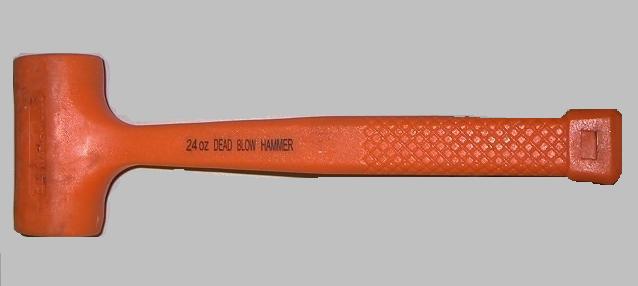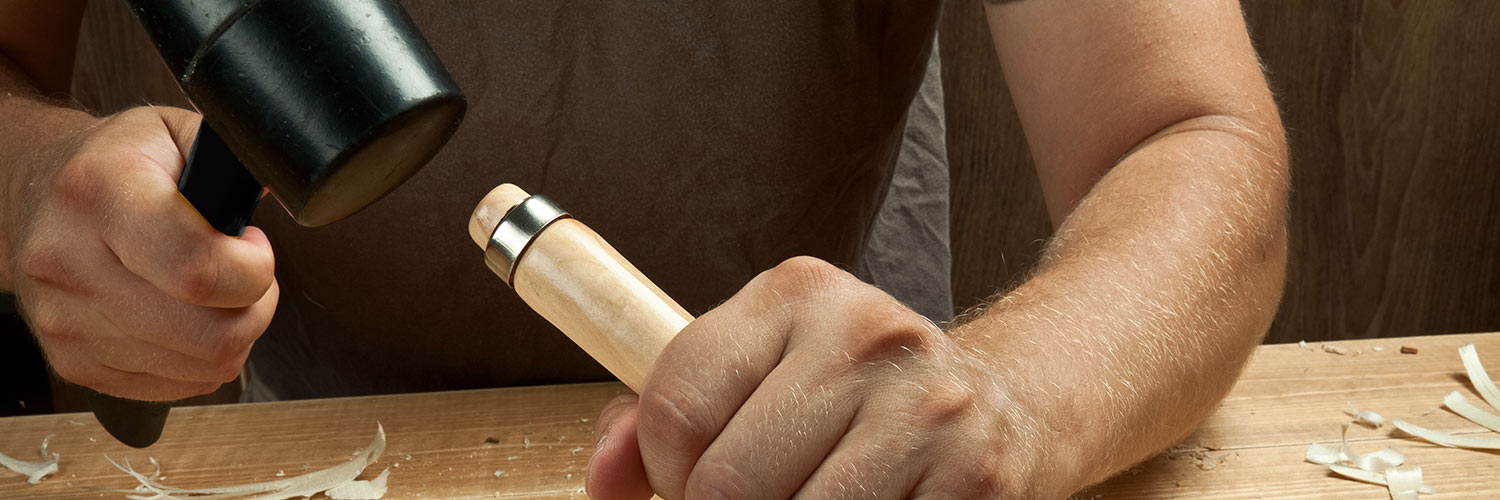A dead blow hammer is a specialized mallet designed to minimize rebound and deliver maximum force. It is often used in applications requiring precision and control.
A dead blow hammer features a hollow head filled with sand or lead shot, which absorbs shock and reduces rebound. This design allows for more accurate strikes, making it ideal for tasks like assembly, disassembly, and positioning of parts. The hammer’s unique construction helps prevent damage to both the tool and the workpiece.
Commonly used in automotive, woodworking, and metalworking industries, a dead blow hammer ensures controlled force application. Its ergonomic handle provides a comfortable grip, reducing hand fatigue during prolonged use. This makes it a valuable tool in any workshop.
Introduction To Dead Blow Hammers
A dead blow hammer minimizes rebound and maximizes control through its specialized design. Ideal for delicate work, it reduces damage to surfaces. Common uses include automotive repairs, woodworking, and metalworking.
Definition
A Dead Blow Hammer is a specialized tool designed for minimizing damage and rebound when striking surfaces.
Unique Features
Dead Blow Hammers are filled with sand or shot to prevent bouncing and offer more control.
Construction And Design
The dead blow hammer is a unique tool in many workshops. Its construction and design make it different from other hammers. This section explores its materials and internal mechanics.
Materials Used
The dead blow hammer is made from strong materials. The head is often made of steel or aluminum. These metals provide durability and strength. The handle is usually covered in a rubber or plastic coating. This ensures a good grip and reduces vibration.
The striking face is often covered with a soft material. This can be nylon or polyurethane. These materials prevent damage to surfaces. They also reduce rebound, making the hammer safer to use.
Internal Mechanics
The inside of a dead blow hammer is different from regular hammers. It contains a hollow cavity filled with shot or sand. This filling moves inside the hammer as you swing it.
When the hammer strikes, the filling absorbs the shock. This reduces the amount of rebound. It also increases the force of the blow. This makes the dead blow hammer very effective for delicate work.
The internal mechanics ensure that every strike is precise. The hammer delivers more power with less effort. This design makes it a favorite among professionals.
Types Of Dead Blow Hammers
Dead blow hammers come in various types, each designed for specific tasks. Understanding these types helps you choose the right tool for the job. Below, we’ll explore the two main categories: standard dead blow hammers and specialized variants.
Standard Dead Blow
A standard dead blow hammer is the most common type. It features a hollow head filled with sand or shot. This design helps absorb shock and reduce rebound. Standard dead blow hammers are versatile tools. They’re ideal for tasks requiring controlled force.
| Feature | Description |
|---|---|
| Head Material | Metal or plastic |
| Filling | Sand or shot |
| Handle | Rubber or plastic grip |
These hammers are commonly used in automotive repairs, woodworking, and machinery maintenance. The non-marring head ensures it won’t damage surfaces.
Specialized Variants
There are several specialized variants of dead blow hammers. Each type is tailored for specific tasks. Let’s look at a few examples:
- Ball Peen Dead Blow: Combines the features of a ball peen hammer with a dead blow design. Used for metalworking and shaping.
- Soft Face Dead Blow: Has interchangeable soft faces. Ideal for delicate surfaces.
- Fiberglass Handle Dead Blow: Offers extra durability and shock absorption. Common in heavy-duty applications.
Specialized dead blow hammers provide unique advantages. Selecting the right variant can improve efficiency and precision in your work.

Credit: en.wikipedia.org
Primary Uses
A dead blow hammer is a versatile tool designed to minimize damage. Its primary uses span various industries, thanks to its unique construction. Below, we explore its main applications.
Automotive Industry
In the automotive industry, dead blow hammers are essential. They help in assembling and disassembling parts without causing damage. Mechanics use them to adjust or remove car parts efficiently. These hammers reduce the risk of dents or scratches on delicate surfaces. Their non-marring heads ensure parts stay intact.
Common tasks where these hammers excel:
- Aligning car doors and panels
- Removing stuck wheel hubs
- Installing and removing engine parts
Metalworking
Metalworking benefits greatly from dead blow hammers. These hammers deliver controlled strikes with minimal rebound. This feature is crucial for precise metal shaping and forming. Blacksmiths and metalworkers rely on them for accurate results.
Uses in metalworking include:
- Flattening and shaping metal sheets
- Fitting metal components together
- Removing and installing rivets
Dead blow hammers ensure metal surfaces remain smooth and unscathed. Their ability to absorb shock makes them ideal for delicate tasks.
Advantages Over Traditional Hammers
Dead blow hammers offer several advantages over traditional hammers. These benefits make them a preferred choice in many applications.
Reduced Recoil
One major benefit of a dead blow hammer is reduced recoil. The hammer absorbs the shock from each strike. This makes it easier to use and safer for prolonged tasks.
The hammer contains a chamber filled with sand or lead shot. This design helps to dampen vibrations and minimize bounce-back. Users experience less fatigue and have better control.
Precision Striking
Dead blow hammers allow for precision striking. The hammer’s design enables accurate hits without damaging the work surface. This is crucial for delicate tasks.
Traditional hammers can leave dents or cause unintended damage. Dead blow hammers distribute force evenly, reducing the risk of surface damage. This makes them ideal for tasks requiring careful handling.

Credit: www.reddit.com
Safety Tips
A dead blow hammer minimizes damage to surfaces with its non-marring design. It’s used for precision work and reducing rebound.
Proper Handling
Always grip the hammer securely to prevent slippage.
Position your body properly to avoid strain or injury.
Maintenance
Regularly inspect the hammer for any signs of wear.
Keep the hammer clean and store it in a dry place.
Common Mistakes
Using a dead blow hammer correctly requires knowledge and precision. Many beginners make common mistakes, which can lead to tool damage or personal injury. Understanding these mistakes helps avoid them and ensures safe, effective usage.
Incorrect Applications
The dead blow hammer is designed for specific tasks. Using it for the wrong purposes can lead to damage. It’s not suitable for driving nails or chisels. These tasks require a different type of hammer.
- Using on Hard Materials: Avoid using on very hard surfaces. This can damage the hammer’s soft face.
- Striking Sharp Edges: Do not use it on sharp edges. This can cause the face to chip.
- Heavy-duty Tasks: The hammer isn’t for heavy demolition work. Use a sledgehammer instead.
Overuse
Overusing a dead blow hammer can lead to wear and tear. This reduces its effectiveness over time. Consider these points to avoid overuse:
- Inspect Regularly: Check the hammer for wear and tear after each use.
- Use Appropriately: Only use the hammer for light to medium-duty tasks.
- Replace When Needed: Replace the hammer if the face becomes too damaged.
Following these guidelines ensures the longevity and effectiveness of your dead blow hammer.
Expert Recommendations
Expert recommendations can help you choose the right dead blow hammer. Let’s explore the best brands and usage techniques.
Brand Choices
Choosing the right brand is important. Here are some top choices:
- Stanley: Known for durability and comfort.
- Tekton: Offers precision and reliability.
- Estwing: Famous for its solid construction.
- Nupla: Provides excellent grip and balance.
Each of these brands has unique features. They all provide high-quality dead blow hammers.
Usage Techniques
Using a dead blow hammer correctly is key. Follow these tips:
- Grip the handle firmly. This ensures control and safety.
- Align the hammer with the target. Proper alignment reduces mis-hits.
- Use a smooth, controlled swing. T

Credit: www.ustape.com
Frequently Asked Questions
What Is A Dead Blow Hammer?
A dead blow hammer is a specialized tool designed to minimize rebound and deliver controlled force.
How Does A Dead Blow Hammer Work?
It uses a hollow head filled with sand or shot to absorb shock and reduce rebound.
Why Use A Dead Blow Hammer?
It prevents damage to surfaces and provides better control during tasks requiring precision.
Where Can You Use A Dead Blow Hammer?
It is ideal for automotive work, woodworking, and metalworking where controlled force is necessary.
What Materials Make Up A Dead Blow Hammer?
Dead blow hammers typically have a steel or rubber-coated head and a durable handle for grip.
Conclusion
A dead blow hammer is essential for reducing damage and increasing precision. It’s perfect for mechanics, carpenters, and DIY enthusiasts. Its unique design minimizes rebound, making tasks easier and safer. Invest in a dead blow hammer for your toolkit. You’ll appreciate its versatility and efficiency for various applications.
Recent Posts
Maintaining clean gutters is essential for preventing water damage to your home, and choosing the best ladder for cleaning gutters can make the job much easier and safer. With so many options on the...
Best Ladder for Cleaning Caravan Roof: Top Picks for You Every Adventure!
Today we will discuss the best ladder for cleaning caravan roof. Cleaning caravan roofs is one of the crucial tasks.After many days, a caravan roof can get dirty by debris, dirt, and grime. These can...
